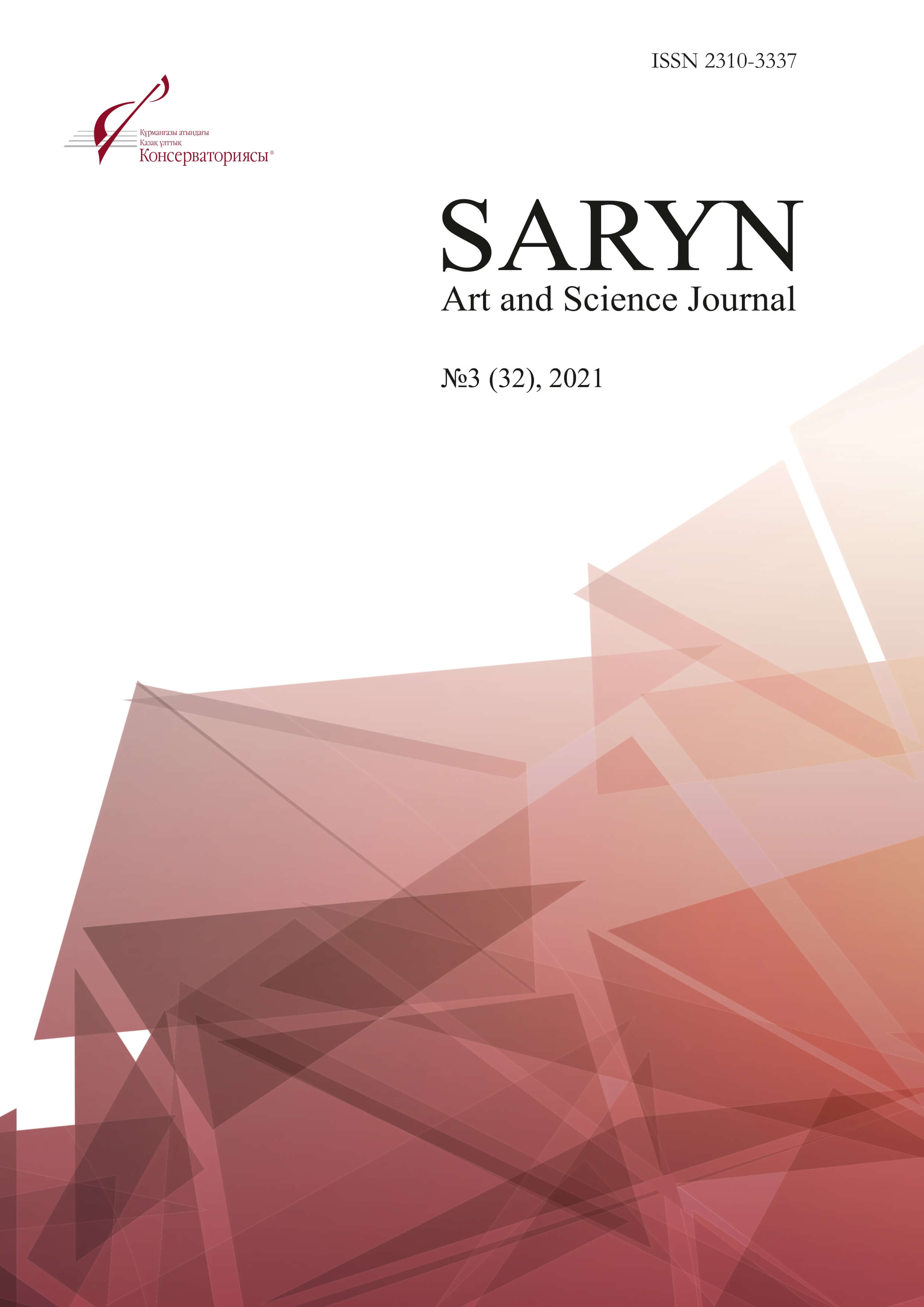Article information
Article publication date
2021-09-30
Article Page
15-21
Chapter
Arts & Humanities
License
Abstract
The article examines the geocultural image of Kazakhstan in the aspect of its perception in the musical communication of the intercultural space. In this work, methods of analysis and assessment of the level of perception of international listeners of some works are applied using Kazakh musical citation. The authors presented a qualitative case study of Kazakh musical works by foreign composers, which contribute to the expansion of both national and international audiences. Derived from analysis and evaluation, the preliminary results showed the perceived difference in perception. It was found that there are significant deviations between the perception of local and foreign audiences. These differences were revealed when recognizing Kazakh traditions used by foreign composers. The research findings will help create a better understanding of how an identical image of Kazakhstan and Central Asia can be promoted. In addition, the conclusions of the work will help to strengthen "international understanding", as well as create a bridge between cultures, while not losing the unique aspects of Kazakh musical and cultural identity. The article is intended both for specialists in the field of musical art and pedagogy, and for a wide range of amateurs as well.
Keywords
Kazakhstan
Kazakh music
contemporary foreign composers
References
Sipos, J et al. Kazakh Folksongs from the two ends of Steppe. [Текст] //Budapest: Akademai Kiado, 2001. p. 303
Fuki Yagi. Systematization of Kazakh music in Mongolia: activities of theater and radio station during the Soviet era, 2019. London: Asian Ethnicity, Volume 21, 2020 - Issue 3, pp.413-424
Rietbergen, P. Europe: a cultural history, 1998. London: Routledge. p.730
Kazakh SSR: Short encyclopedia (ed. By R. Nurgaliev. -: Ed. The Kazakh Soviet encyclopedia. — T. 4: Language. Literature. Folklore. Art. Architecture, Almaty, 1991. p. 685
Mariyam Zhagor-kyzy //North-Kazakhstan region. Encyclopedia. -2-e Edition, enlarged. - Almaty: Arys, 2006. p. 491
UNESCO. What is intangible cultural heritage? 2013. http://www.unesco.org/culture/ich/index.php?lg=en&pg=00002
Smykova, M. R. /Smykova, M. R. [Текст] // Mezhdunarodnyi nauchnyi jurnal ‘Simvol nauki”, 2016. pp.161-164
Gluck, R. J. /Gluck, R. J. //The Columbia-Princeton Electronic Music Center: Educating International Composers, Computer Music Journal, Vol. 31, No. 2, Creating Sonic Spaces (Summer), 2007. pp. 2038
Hannan, M.F. Educating Australian screen composers [Текст] // Hannan, M.F.//D Bennett & M.
Hannan (eds), Inside, outside, downside up : conservatoire training and musicians' work, Black Swan Press, Perth, WA, 2008. pp. 73-85
Nedlina, V. Academic music of Kazakhstan and USA: Intersections of a turn of centuries. [Текст] Almaty: Kurmangazy Kazakh State Conservatory, 2011. p.180
SOAS. Kazakh Music: Songs & Tunes from across the Steppe, London: SOAS, 2007. http://www.soas.ac.uk/music/cds/kazakh/
Boyes, G. The Imagined Village: Culture, Ideology, and the English Folk Revival. [Текст] // Manchester: Manchester University Press, 1993. p.285
Brocken, M. The British Folk Revival, 1944-2002. [Текст] // Brocken, M. //Song and Popular Culture. Freiburg: Zentrum für Populäre Kultur und Musik, 2003. pp. 243-246




